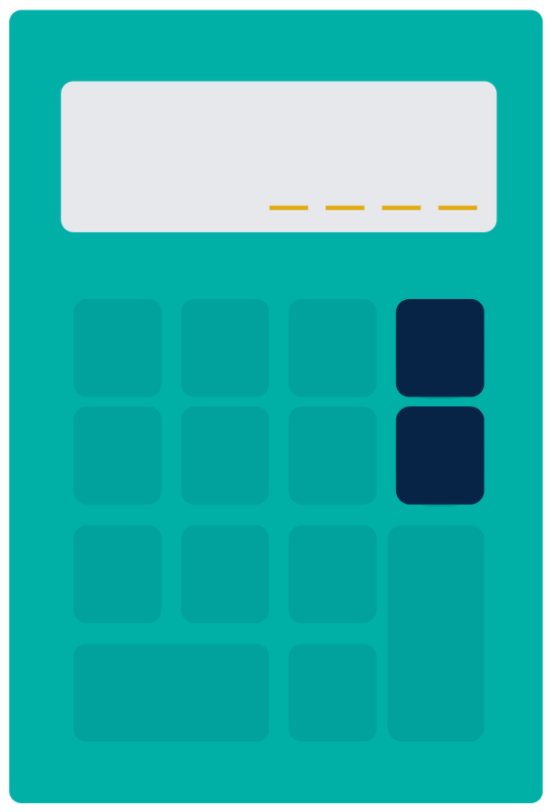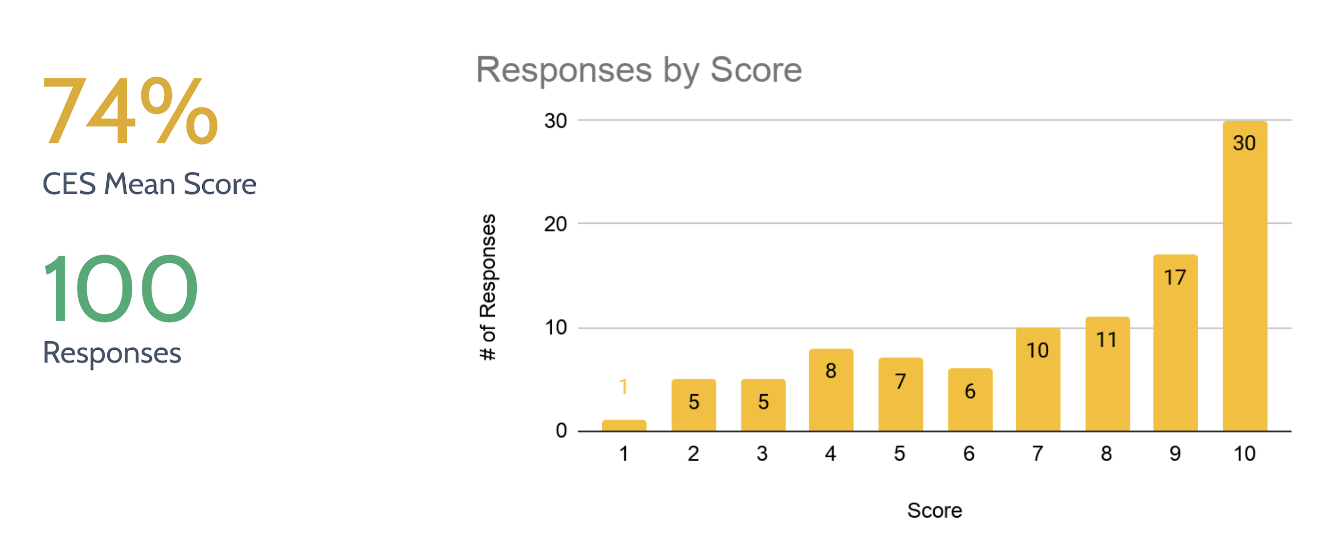Customer Effort Score (CES)
There is a reason why I keep my chocolate stash well hidden in the last corner of my apartment. High efforts generally discourage people from taking an action. While this is good news in my chocolate example, it’s usually bad news when it requires great effort from your company’s customers to interact with your software.
Think about it: Has Netflix made it easy for you to watch your favorite show in a frenzy? They sure did.
But as well as you all know the Netflix example, you probably also know some software at work that makes your life complicated. Gartner research shows that 96% of customers become disloyal when faced with a complex service interaction.
This KPI is about the effort required for a particular interaction. Customers are generally asked how they agree with the statement “The company made it easy for me to make X”. For example: “How easy was it to complete your order”, and the answers in our example typically range from “very high effort” to “very low effort”.

Similar to the CSAT, the score is not really important. It can be smileys, like this survey, a score from 1 to 10 or in text form.
When can I use CES
We can use the Customer Effort Score every time a customer interacts with our business. For example:
How easy was it to solve an issue with customer support? Ask this question and you will find out how efficient your support team is and whether changes need to be made.
You should also consider sending out a CES survey after a customer has finished reading a knowledge-based article, as this will help you find out how useful your content is.
Basically any kind of interaction with your product or service like “was it easy to buy a subscription?”
The collected answers give you great real-time feedback where improvements are needed and potential blockers need to be resolved.
There are three main cases in which you can utilize the CES:
After customer support
After purchase
After interaction with the product
Transactional or Relational
Compared to NPS and CSAT, this KPI is more transactional than a relational pulse check over time. It is not necessary to send CES questionnaires at a certain time interval. Since the question is to ask customers how much effort they had to put into solving a problem, it is more useful to send the survey after a customer has interacted with your product.
Have you ever been to a restaurant but the service wasn’t paying attention? And as a result of your great effort to order something, you ended up without ordering dessert and a shot of Jägermeister?
If the restaurant would ask a CES survey, it would quickly recognize this flaw and see the potential money that was left on the table. The effort to order something must be minimal to have a restaurant with raving snails.

I personally have another problem with ordering in a restaurant here in Canada. I am from Germany, and we raise our hands when we want to order something. But here in Canada, I find that much too intrusive. Usually people just nod or smile when they need the server’s attention. But whenever I smile at the waitresses, they just smile back at me. I really need to work on my ordering-smile.
How to calculate CES
Anyway, back to our Customer Effort Score: How do we calculate it?
It is calculated in the same way as the Customer Satisfaction Score (CSAT). We take the sum of all points, divide it by the sum of the maximum possible score and multiply it by 100 to get the percentage.


FREE SALES METRICS CALCULATOR
KPI Calculator
Below you can see the evaluation of a CES survey. On the left side we see our CES average of 74% of 100 total answers. The graph on the right shows the distribution of the answers. 30 people gave this company a score of 10. Snailed it.

By the way, if you are used to using a decimal number instead of a percentage, you can view the results either way. 7.4 or 74%. Same, same – not different.
7.4 Score = 74% Score
Same, same!
What if I want to know how I compare to the rest of the industry? Unfortunately, this question cannot be answered because there are no clear industry-wide standards to compare against. Companies use different scales to measure their Customer Effort Score.
Regardless of this, the basic rule is: The higher the CES, the better.
A high CES means that customers experience your company as easily accessible, while a low CES means that employees perceive your processes as difficult or your customer support as inefficient and you need to make improvements, otherwise you risk losing customers..
Summary
Let me summarize we have learned:
A typical question of a CES survey is: “The company made it easy for me to do X” and letting the customer respond on a scale of strongly disagree to agree, or a numerical scale, – or smileys.
If your CES is suboptimal, make a plan to determine the root cause and fix the problem. Customer Effort Scores can only tell you that a process is causing customers headaches; they can’t tell you why. The error could be a support representative, a website glitch, or something else entirely. This means you need to investigate further by asking follow-up questions as part of your survey.
Once you’ve identified the issue, make corrections and then continue to test your CES to ensure the problem stays resolved.
Because efforts are generally involved in transactions with your business, this KPI is best to measure after an interaction.
That concludes this chapter, thank you for reading. In the final chapter on customer service metrics, we will compare NPS, CSAT and CES against each other. See you ther